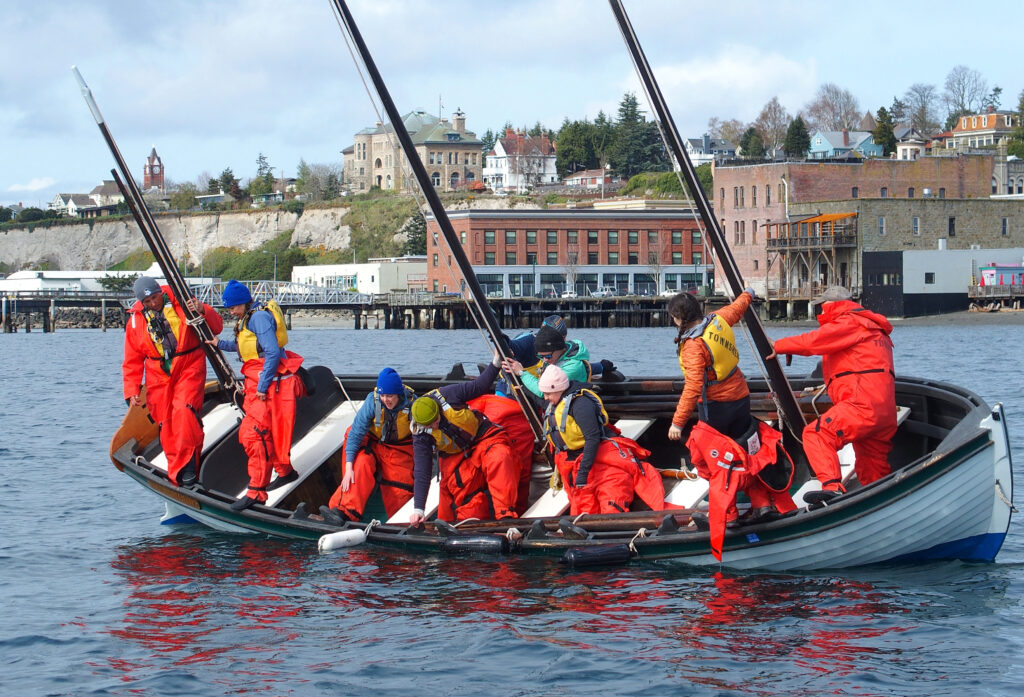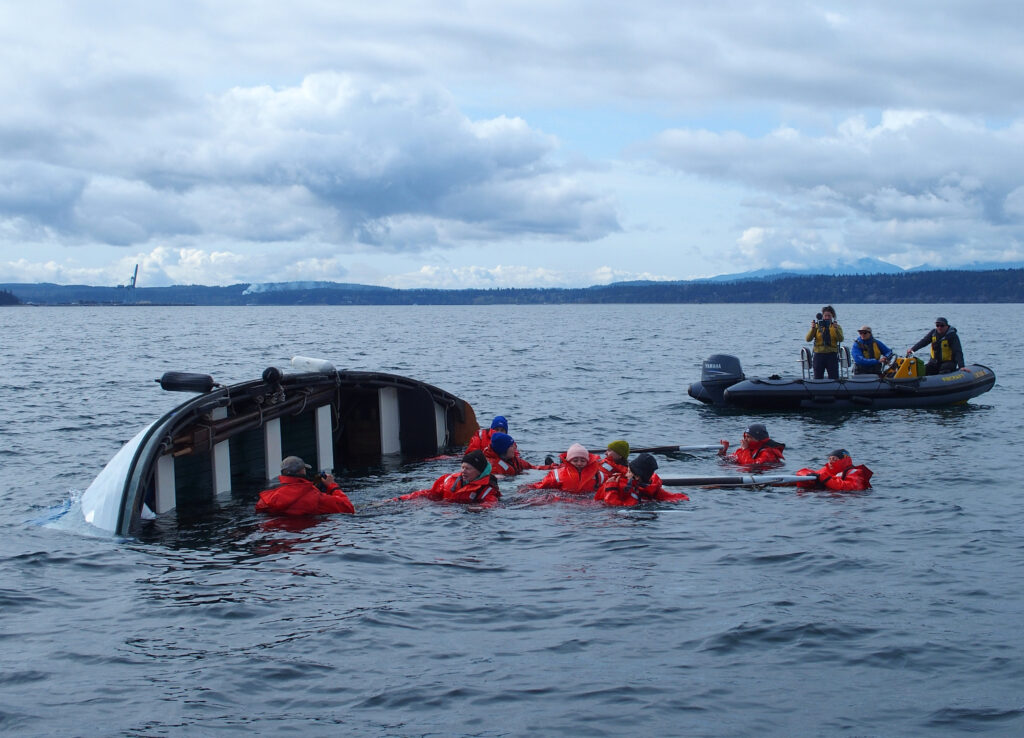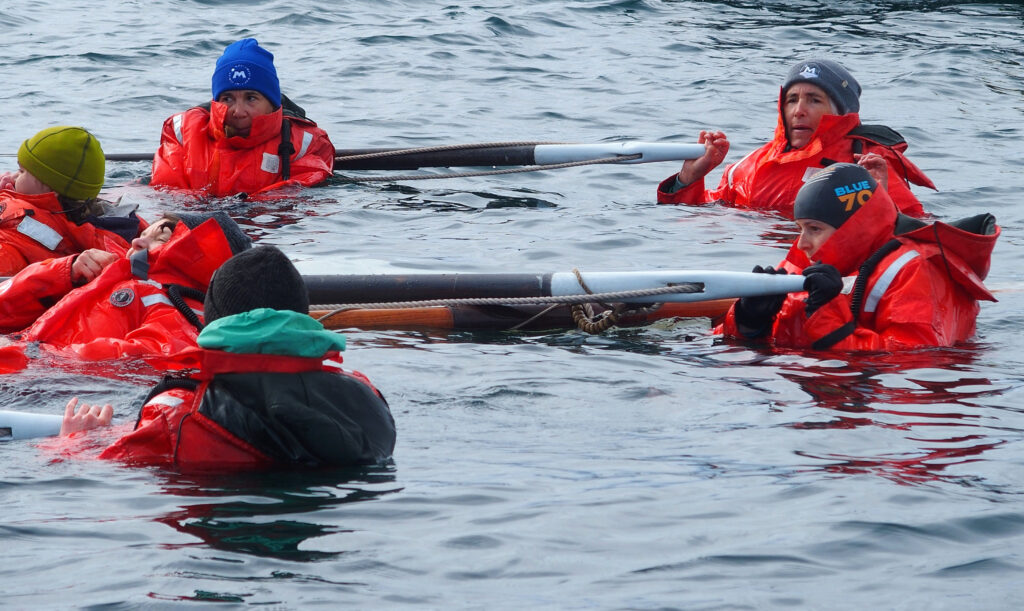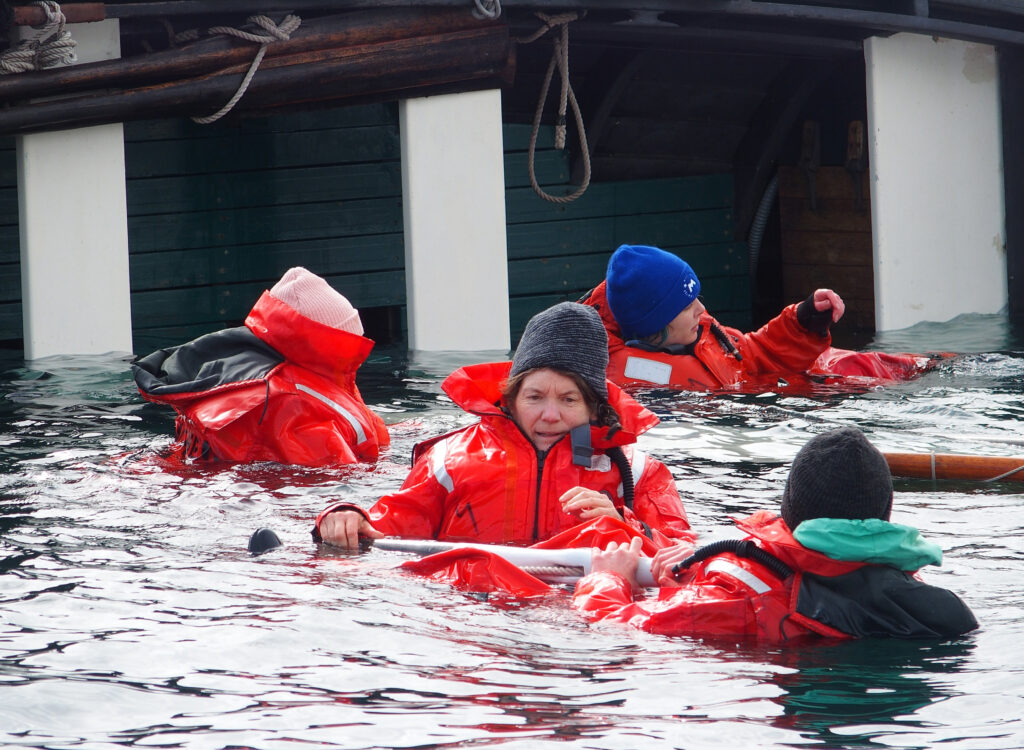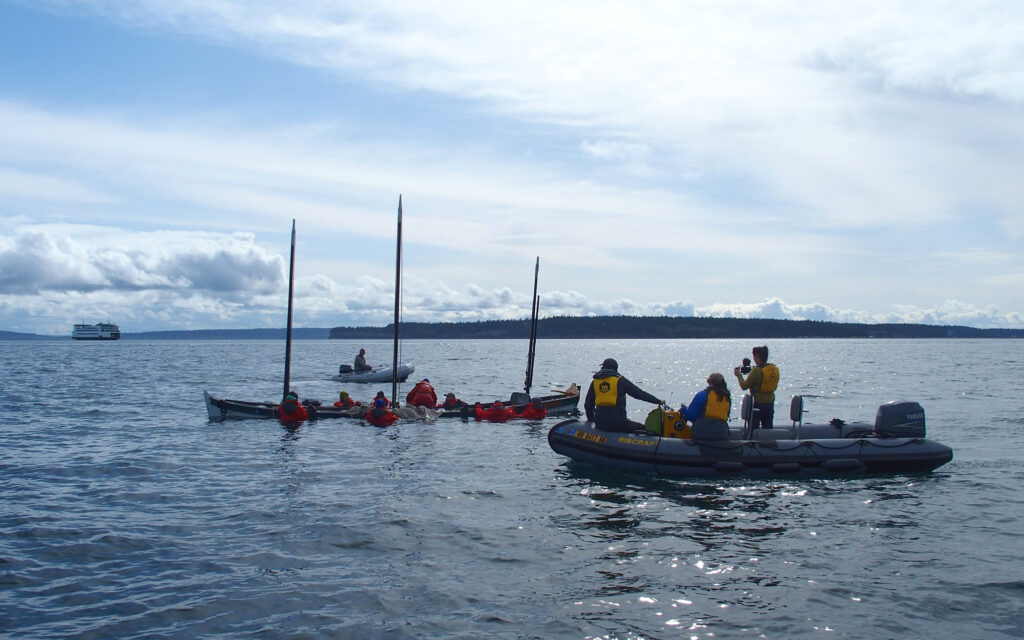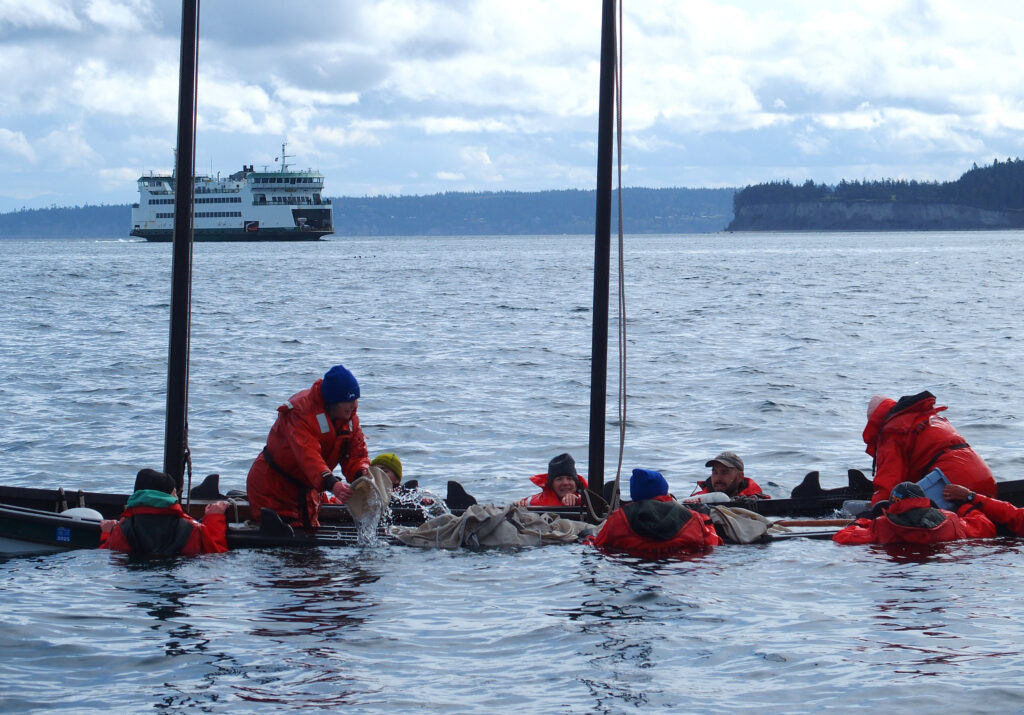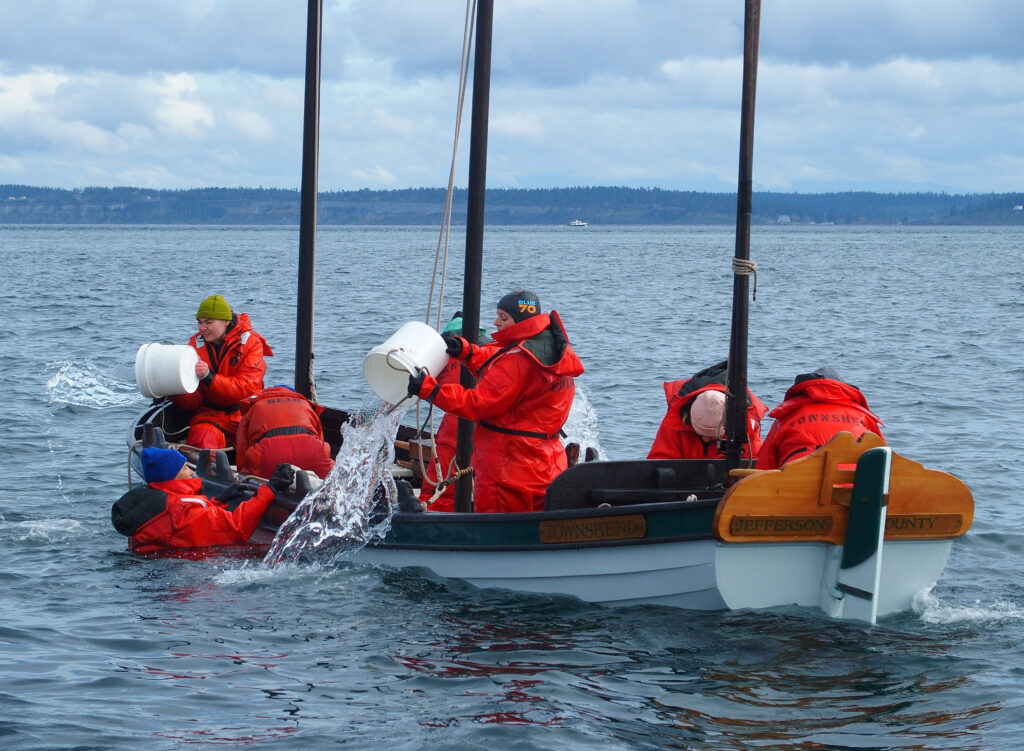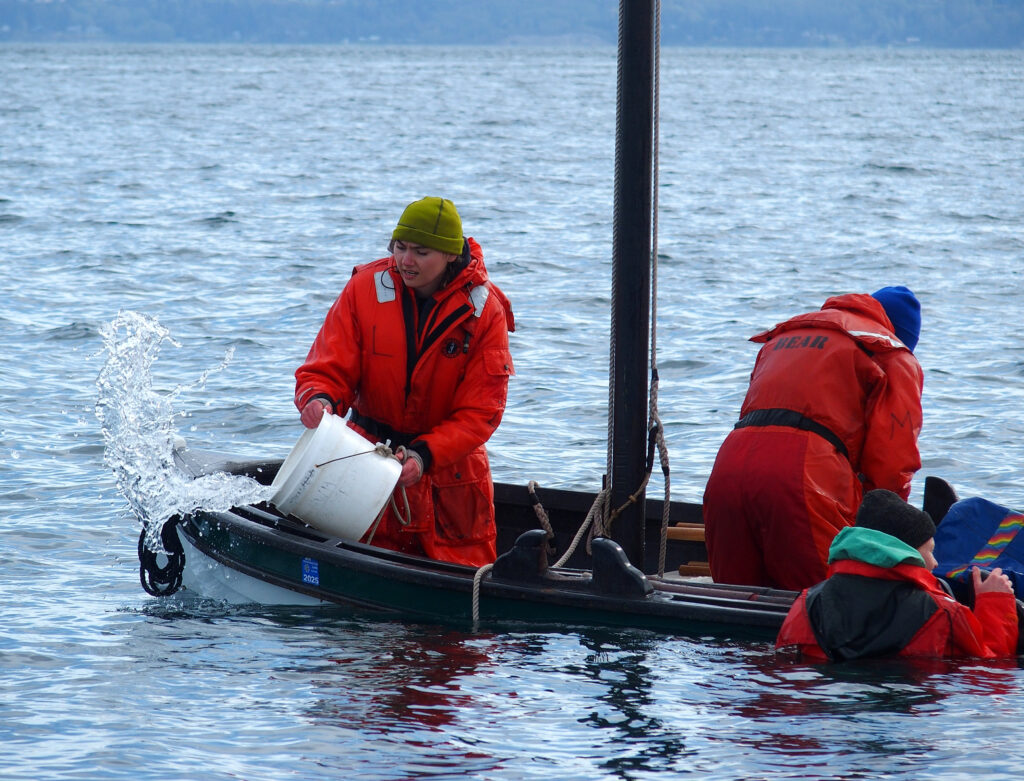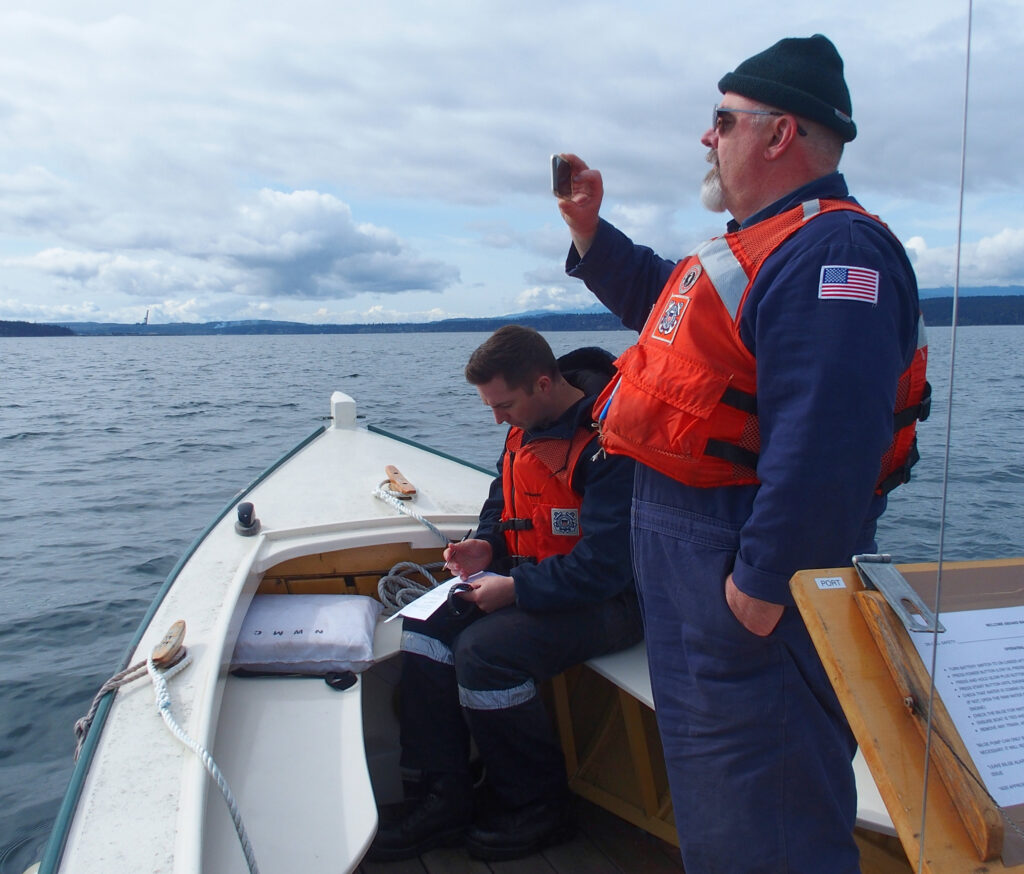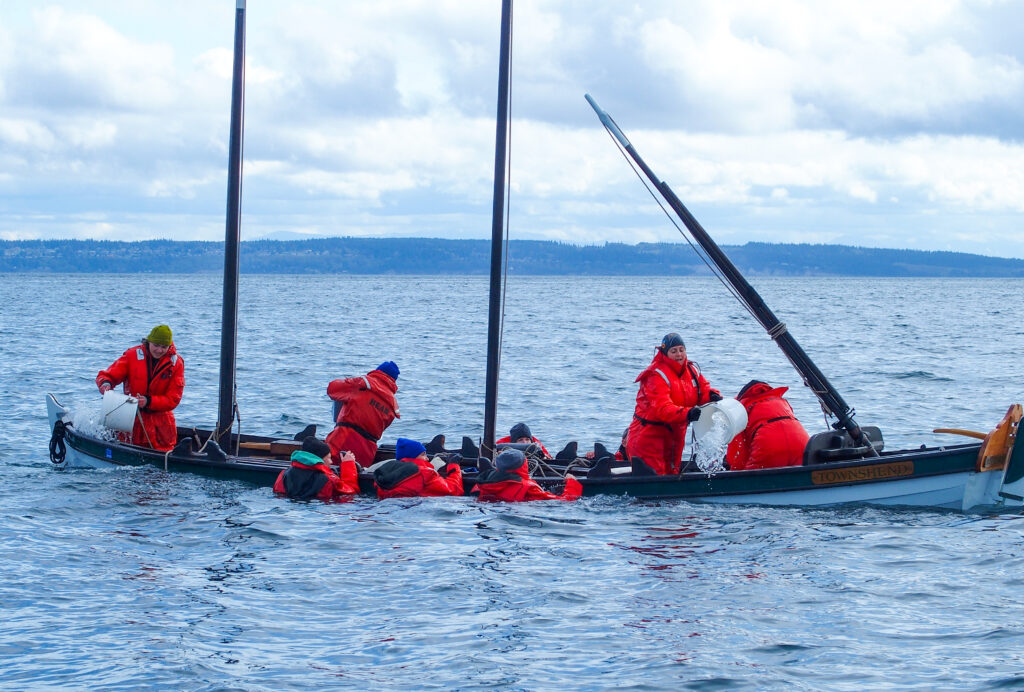By Chrissy McLean, NWM Career Launch Manager
The water temperature is 47 degrees, your boat is flooded to the gunnels, and your crew is… smiling? Telling jokes? It sounds like you’ve landed in the middle of the annual longboat capsize drill. Every spring, as part of our annual Certificate of Inspection renewal, we are supervised by the US Coast Guard as we demonstrate that we can successfully recover and bail our longboats in the event of a capsize.
Running drills is an important part of crew training. Across our programs, we regularly practice scenarios of varying intensity—from crew overboard, safety swimming, entering life rafts, capsize drills, and more. Drills allow us to learn skills needed in an emergency in a lower-stress situation. We build muscle memory and experience that will be ready when we need it in an emergency.
As we build skills, we try to start simple and then add levels of complexity. To prepare for a drill, we walk through the process, practice breathing through cold water shock, set up a count-off system, and identify our buddy. We practice with our gear and go through the steps before we leave the dock, checking in with our buddy to make sure they are okay.
Heading out to the capsize scene, the energy is high. We are buzzing with anticipation—a mix of excitement, anxiety, and adrenaline. We start off slowly, dipping the rail and bringing on a hundred gallons of water—realizing it takes our whole crew standing on the gunnel to make this happen.
And that brings us to the jokes. My favorite this year: Why don’t sailors like to go hat shopping? They don’t like thinking about cap-sizing! Play in stressful situations keeps crew morale up and keeps you occupied. Connecting with our crew and our buddy draws us out of panic mode and back into safety mode. We take care of each other.
We take a breath, set the sail, and before we know it, we’ve capsized to port and our whole crew is in the water. We count off to make sure everyone is present. We help each other get our orange exposure suits (Type V PFDs) fully zipped up and buckled. Looking around, this wild thing is happening; we’re all floating around in the water in bright orange suits like a bunch of otters—and we’re enjoying it!
Once everyone is suited up, we right the boat and start bailing. And bailing. And bailing. We sing while we’re at it (I’ve been bailing out the longboat…all the live-long daaay). As we displace water, we add more crew to the boat, and eventually, we are all aboard. We’re still smiling and singing as we take to the oars and make our way to shore.
We’ve learned a ton of technical skills, and our inspector is satisfied. And most importantly, we have a joyful, empowered memory living in our bodies, ensuring us of our competence to meet a challenging situation.
